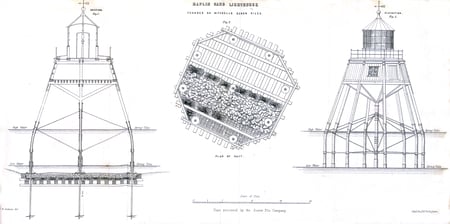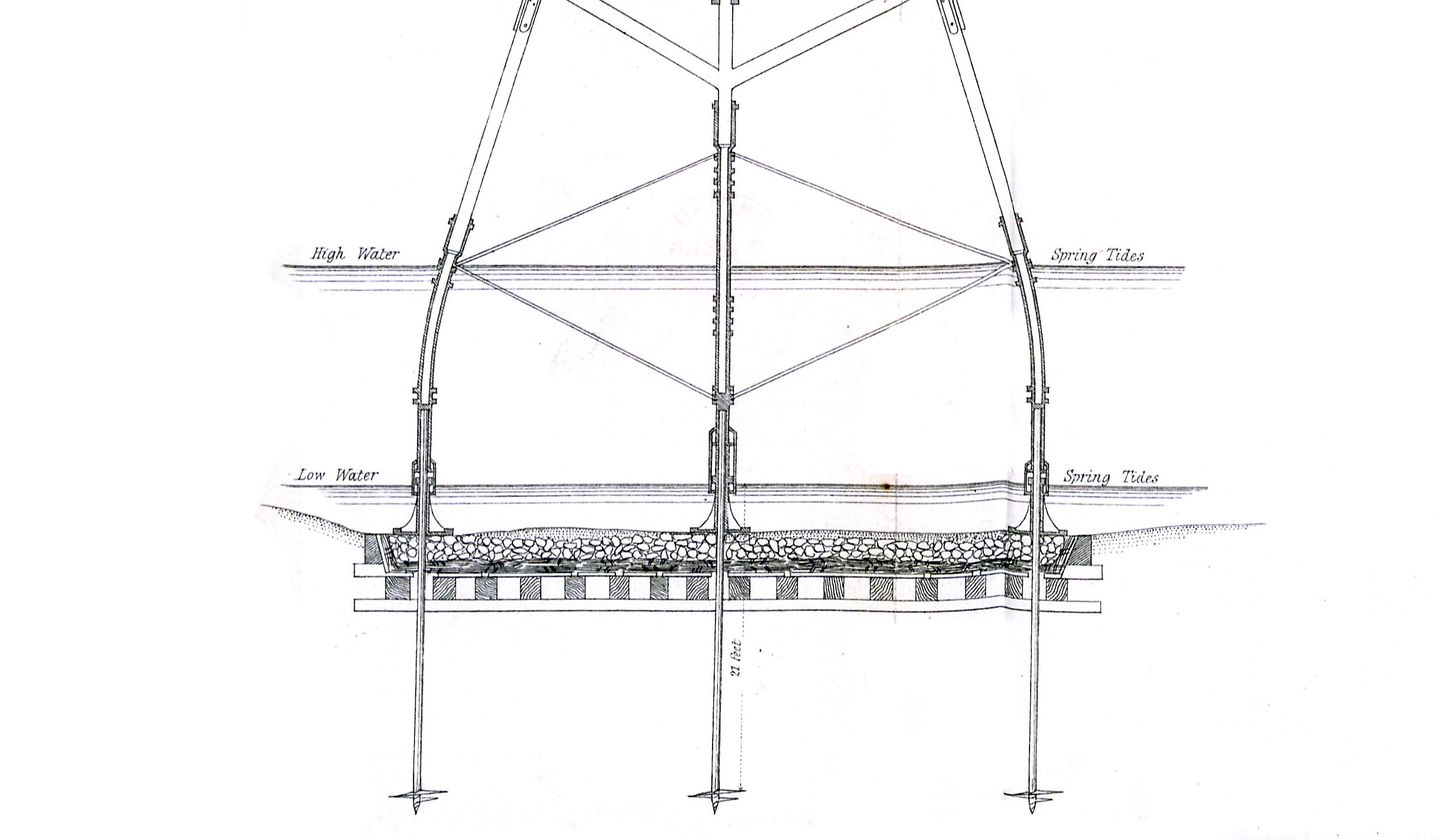 The first question we often get is, “are helical piles a new technology?”. Though they are growing each year in use and popularity, many Geotechnical and Structural Engineers are often unfamiliar with the technology. Complicating the matter is that, in many cases, students who will be our future engineers know very little about helical piles and their history. The truth is that helical piles [a.k.a. screws, screw piles, helical piers, helicals] appeared on the scene in the early 1800s. Alexander Mitchell (1780-1868) applied the use of screw piles in 1836 for moorings and, in 1838, for a lighthouse foundation. To put things into perspective, screw piles preceded the advent of Portland Cement [1850’s] and first use of a gasoline-powered automobile [1886]. According to some historians, screw piles were the major foundation technology of the 19th century.
The first question we often get is, “are helical piles a new technology?”. Though they are growing each year in use and popularity, many Geotechnical and Structural Engineers are often unfamiliar with the technology. Complicating the matter is that, in many cases, students who will be our future engineers know very little about helical piles and their history. The truth is that helical piles [a.k.a. screws, screw piles, helical piers, helicals] appeared on the scene in the early 1800s. Alexander Mitchell (1780-1868) applied the use of screw piles in 1836 for moorings and, in 1838, for a lighthouse foundation. To put things into perspective, screw piles preceded the advent of Portland Cement [1850’s] and first use of a gasoline-powered automobile [1886]. According to some historians, screw piles were the major foundation technology of the 19th century.
There are many theories as to why helical pile usage decreased in the early 20th century; however, one seems to be the most logical. The steam engine at the turn of the century was a major paradigm shift in how machinery could be powered. Helical piles were often installed by animals or humans using a capstan. The capstan rotated and advanced the helical into the ground. Then came Albert Bishop Chance who, in 1907, supported utility poles by connecting guy wires to helical anchors. Helicals continued to find their way into more and more applications as the 20th century rolled on. The advancement and efficiencies in installation machinery after World War II fueled use of the technology so helical piles could be used in a multitude of applications.
So how do helical piles compare to other technologies? Speaking of machines, let’s start there. Many piling technologies; including driven piles, require large footprint, tall machines to install. These machines can often cause complications where there are site restrictions; including lot line and overhead clearance restrictions. Helical piles generally require a much smaller profile equipment (i.e. Hand-Held unit, Bobcat, or Skid Steer) for installation. In addition, helical piles are a pre-engineered solution and scalable; commonly using 3.5’, 5’, 7’ and 10’ sections. These factors allow pile installation where space restriction is an issue. Another advantage of helical piles is that they installed with low noise and low vibration. Compare this to driven piles in which installation is often loud and can cause disturbance and damaging vibration to surrounding structures and neighborhoods. Also, unlike many concrete piling solutions, helical piles are environmentally friendly since they do not require concrete in installation nor do they require excavation or spoil removal. For those that live in areas where spoil testing is required, the process can be extremely expensive. In addition, and unlike concrete piling methods, a helical pile can be immediately loaded. No cure time is required. Let’s not stop here…the benefits go on!
Another big advantage with helicals is torque correlation, which means the installation torque required to install can be used to predict the axial capacity of the pile. Helical piles generally come hot-dip galvanized to increase service life in potentially corrosive soils. Helicals also can be installed in most any weather condition which makes them an ideal year-round solution. Probably one the largest benefits of a helical pile is cost savings. When you compare the high mobilization costs and time required by other piling methods, the total turnkey cost savings of helicals can be exponential.
Are you interested in growing your business with helical piles?
Learn about how to become a CHANCE Certified Installer.
Each year, the number of deep foundation projects using helicals continues to grow as does the trust in the technology. They are a proven, 183 year-old example that proves what was once fashionable can fade out and come back again with a vengeance.
Learn more about utilizing helical piles in your area. Find your local distributor!

